Pressure Relief Valve
This is a general term, which includes safety valves, relief valves
and safety relief valves.
ASVIN spring-loaded pressure relief valve which is designed to open
to relieve excess pressure and to reclose and prevent the further
flow of fluid after normal conditions have been restored. It is
characterized by a rapid-opening 'pop' action or by opening in a
manner generally proportional to the increase in pressure over the
opening pressure. It may be used for either compressible or
incompressible fluids, depending on design, adjustment, or
application.
- Safety Valve
A pressure relief valve actuated by inlet static pressure and characterized by rapid opening or pop action. - Relief Valve
A pressure relief device actuated by inlet static pressure having a gradual lift generally proportional to the increase in pressure over opening pressure. - Safety Relief Valve
A pressure relief valve characterized by rapid opening or pop action, or by opening in proportion to the increase in pressure over the opening pressure, depending on the application, and which may be used either for liquid or compressible fluid.

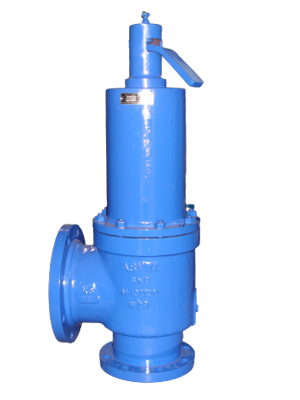
Safety Valve
A safety Valve is a pressure Relief Valve actuated by inlet static
pressure and characterized by rapid opening or pop action. (It is
normally used for steam and air services.)
- Low Lift Safety Valve A low lift safety Valve is a safety Valve in which the disc lifts automatically such that the actual discharge area is determined by the position of the disc.
- Full Lift Safety Valve A full lift safety Valve is a safety Valve in which the disc lifts automatically such that the actual discharge area is not determined by the position of the disc.
Relief Valve
A Relief Valve is a pressure relief device actuated by inlet static pressure having a gradual lift generally proportional to the increase in pressure over opening pressure. It may be provided with an enclosed spring housing suitable for closed discharge system application and is primarily used for liquid service.
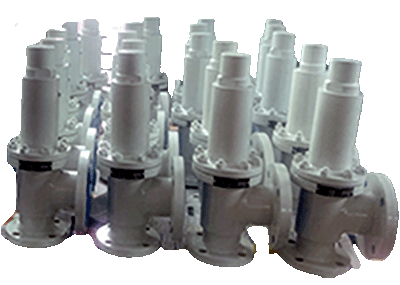

Safety Relief Valve
A safety Relief Valve is a pressure Relief Valve characterized by rapid opening or pop action, or by opening in proportion to the increase in pressure over the opening pressure, depending on the application and may be used either for liquid or compressible fluid.
Thermal Relief Valve
ASVIN make Thermal Relief Valves (TRV) are employed to relief the
pressure created by increasing in the liquid volume caused by an
increase in temperature. A Thermal Relief Valve is used when a liquid
is blocked (i.e., in a line or pipe between two block valves) in a pipe
and the pipe is exposed to sunlight. Although liquid does not expand
much, since it fully fills the pipe, the forces developed can seriously
stress the pipe. There is no difference between a Safety Relief Valve
for any other purpose and a Thermal Relief Valve. However, it is
usually small in size, "D" orifice.
For a screwed valve this would be 3/4 x 1 inch. Sizing a Thermal Relief
Valve is generally neglected since the smallest orifice size available is
generally considerably (10 to 100 times) greater than the required
capacity. However, if sizing is required, ASVIN can size as per API 520
and API 521. The testing can be done as per API 527. Process
Connection can be either screwed/ flanged/ SW or as per customer’s
requirement. The set pressure can be as per the requirements.


Conventional Safety Relief Valve
A conventional safety Relief Valve is a pressure Relief Valve which has its spring housing vented to the discharge side of the Valve. The operational characteristics (opening pressure, closing pressure, and relieving capacity) are directly affected by changes of the back pressure on the Valve.
Balanced Safety Relief Valve
A balanced safety Relief Valve is a pressure Relief Valve which
incorporates means of minimizing the effect of back pressure on the
operational characteristics (opening pressure, closing pressure, and
relieving capacity).


Balanced Bellows Safety Valve
API 520 Practice Guidelines: a conventional design should not typically
be used when the built-up backpressure is greater than 10% of the set
pressure at 10% over pressure. European standard EN ISO 4126: the
built-up backpressure should be limited to 10% of the set pressure
when the valve is discharging at the certified capacity.
Other Backpressure concerns
A large PB will also affect the flowrate of the valve when open.
The total backpressure is generated from two components,
superimposed backpressure and the built-up backpressure
Superimposed back pressure: the static pressure that exists on the
outlet side of a closed valve.
Built-up back pressure: the additional pressure generated on the outlet
side when the valve is discharging.
In a conventional design (no bellows), the superimposed backpressure
will affect the opening characteristic and set value, but the combined
backpressure will alter the closing (blowdown) and re-seat value.
Sentinal Relief Valves
This non-code steam relief valve is made from durable stainless steel.
Used as an audible warning (sentinel) valve on steam equipment, this
valve is not meant for pressure relief. Used on steam turbines, these
valves springs are made with high temperature alloy steel for stability
at super-heated temperatures.
- Features
- All parts are stainless steel (SS)
- Precision-lapped bevelled seats for optimum performance
- Pivot between spring and disc corrects misalignment and compensates for spring side thrust
- Each Kunkle valve is tested and inspected for pressure setting and leakage
- Applications
- Sentinel (warning) on steam equipment. Intended as audible warning device, not for pressure relief.
- Steam turbines.
- Pressure and Temperature Limits
- 1 to 400 PSIG & -60° to 850°F

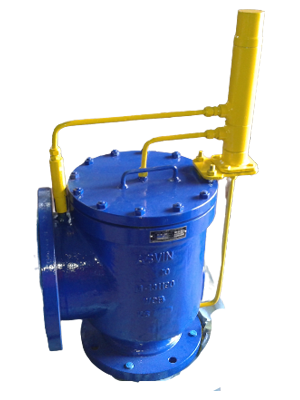
Pilot Operated Safety Relief Valves
A pilot-operated pressure Relief Valve is a pressure Relief Valve in
which the major relieving device is combined with and is controlled by
a self-actuated auxiliary pressure Relief Valve.
Rupture Disc
Rupture discs are to protect pressure systems against damage
from excessive overpressure or vacuum by bursting within a predetermined pressure differential across the disc.
The solid pre-bulged rupture disc is still an important member of the rupture disc family, this construction does not satisfy all operational requirements.
Some of these requirements concern minimum practical values for the operating ratio and manufacturing range of the disc. The operating ratio defines the
ratio of operating pressure to bursting pressure required to ensure an acceptable service life of the disc, and the manufacturing range the pressure
range around the specified pressure to which solid pre-bulged rupture discs can be manufactured.
Rupture Disc Device
A non-reclosing pressure relief device, consisting of rupture disc and holder, that is actuated by
differential pressure and functions by bursting of the rupture disc.
Rupture Disc
The pressure containing and pressure sensitive element of the rupture disc device.
Pre-bulged Rupture Disc
A rupture disc that is pre-bulged in the direction of the fluid pressure.
Pre-bulged Composite Rupture Disc
A pre-bulged rupture disc consisting of two or more layers of which one is slotted so as to reduce its strength and to control the bursting pressure.
Reverse Buckling Disc
A rupture disc that is domed against the direction of the fluid pressure.
Holder
That component of a rupture disc device which holds the rupture disc around its circumference, consisting of the inlet and outlet holder parts.
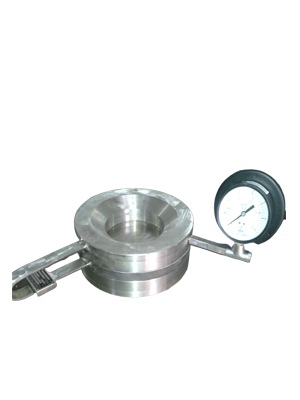
Underground Safety Valves

Safety Valves for Water Tank/ Water Flow Canals as per BS 4558: 1983
A Valve provided in a canal lining which opens in the canal to relieve
excess hydrostatic pressure behind the lining. The Pressure relief
valves shall be such that it will operate by a differential pressure less than that which will be damaging to the lining with safety factor of 2.
this should be operative generally with a differential head of 100 mm
and above. Pressure relief valves are generally of such material which
will be abrasive resistant and will not be affected due to its presence
in the water.
Pipes are provided with filter all round so that sub-soil water can flow
in the pipe without changing the soil strata beneath the lining. Pipes
are generally of cement concrete/end may be perforated. Joints in the
pipe are kept open so as to facilitate the entry of water.
Atmospheric Relief Valves

ASVIN make water sealed soft seated atmospheric relief valves are
primarily designed to provide emergency service automatic protection
for turbine and condenser equipment.
This rugged valve for large flow and low-pressure relief has been
especially designed for trouble free operation, low maintenance and
premium tightness performance.
Although ASVIN soft seated atmospheric relief valve was intended for
steam condenser and turbine applications, it has been found suitable
for various applications on gas and vapors, where its soft seat tightness
performance and large flow capacity matched the service
requirements. An external water seal connection is provided for a seal
around the seal disc on each valve. The gauge glass supplied will help
to visually observe the water seal level. The overflow connection
provides for adequate drainage and maintains a seal height. In
operation, this water seal insures proper sealing against air in-leakage.
The valve is equipped with a manual hand wheel to allow the valve to
be checked and maintained. Manual hand wheel and lifting mechanism
is not intended for use as a vacuum breaker. Damage to the valve will
result if manual operation of the hand wheel is attempted while the
inlet side of the valve is under a vacuum. The ASVIN valve is sized to
pass the rated capacity of steam at a pressure not exceeding 10 PSIG
as outlined by HEI Standards for Steam Surface Condensers. The valves
are normally sized based upon the capacities for protection.
ASVIN ARVs are produced in three basic designs: Horizontal, Vertical
and Angle.
The Horizontal and Angle valves are available with various angular
relationships between the inlet and outlet flanges to facilitate piping.
Our Products
- Safety Valve
- Relief Valve
- Safety Relief Valve
- Thermal Relief Valve
- Conventional Safety Relief Valve
- Balanced Safety Relief Valve
- Balanced Bellows Safety Valve
- Sentinal Relief Valves
- Pilot Operated Safety Relief Valves
- Rupture Disc
- Tubular Level Indicator
- Reflex Level Indicators
- Transparent Level Indicators
- Magnetic Level Indicators
- Bi-Colour Level Indicators
- Remote IGEMA Level Indicators
- Fullview Glasses
- Ball Flow Indicators
- Double Window Plain
- Double Window Drip
- Double Window Flapper
- Double Window Rotating Wheel
- OPA - Orifice Plate Assemblies
- Restriction Orifice Plate
- Integral Orifice Plate Assembly
- Flow Nozzles
- Flow Venturi
- Pitot Tube
- T Type Strainers
- Y Type Strainers
- Basket Strainers
- Duplex Strainers
- Conical / Temporary Strainers
- Magnetic Strainers
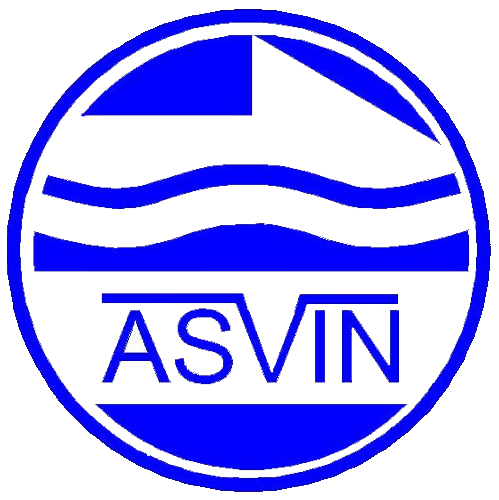 ASVIN
ASVIN